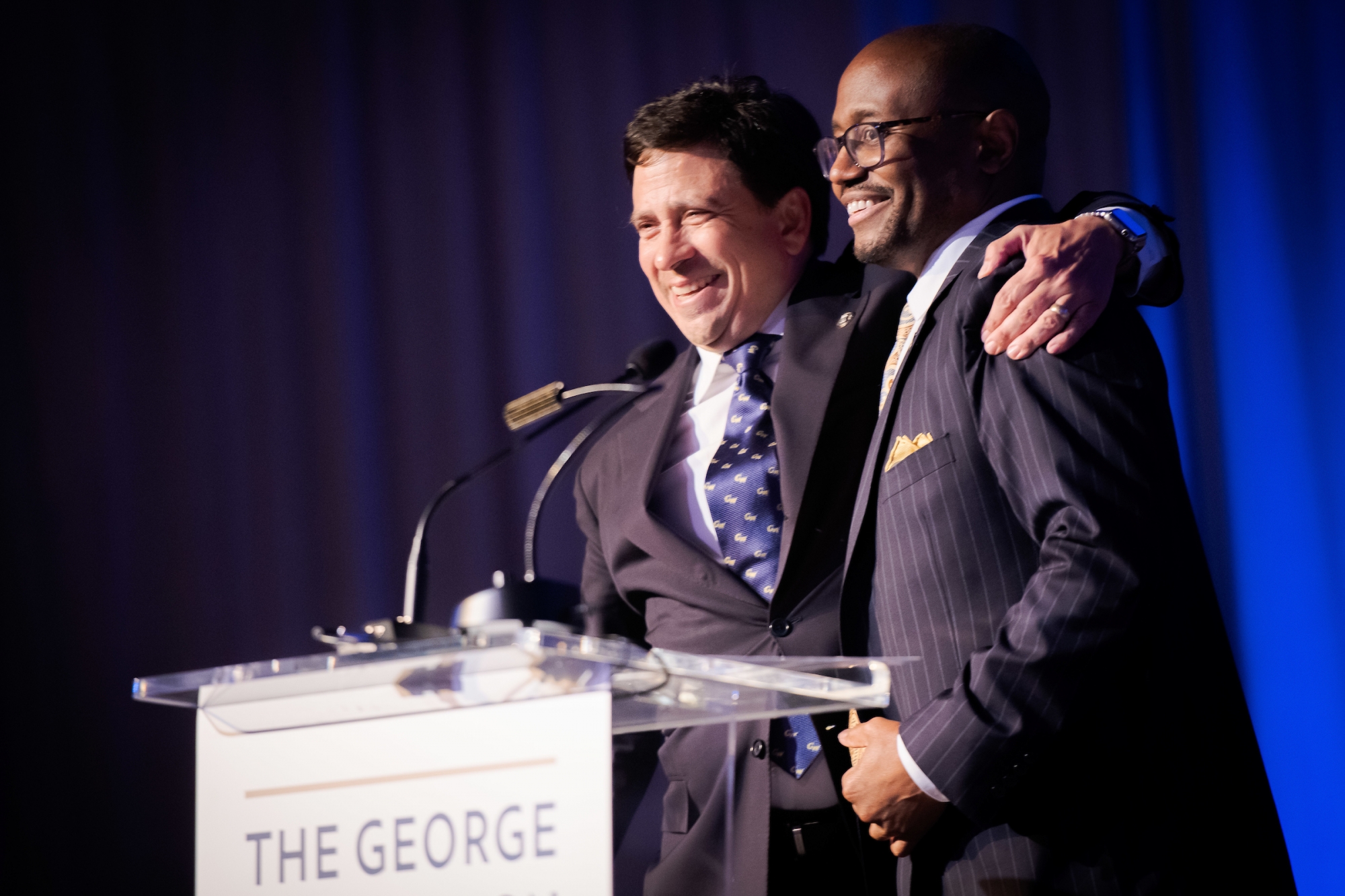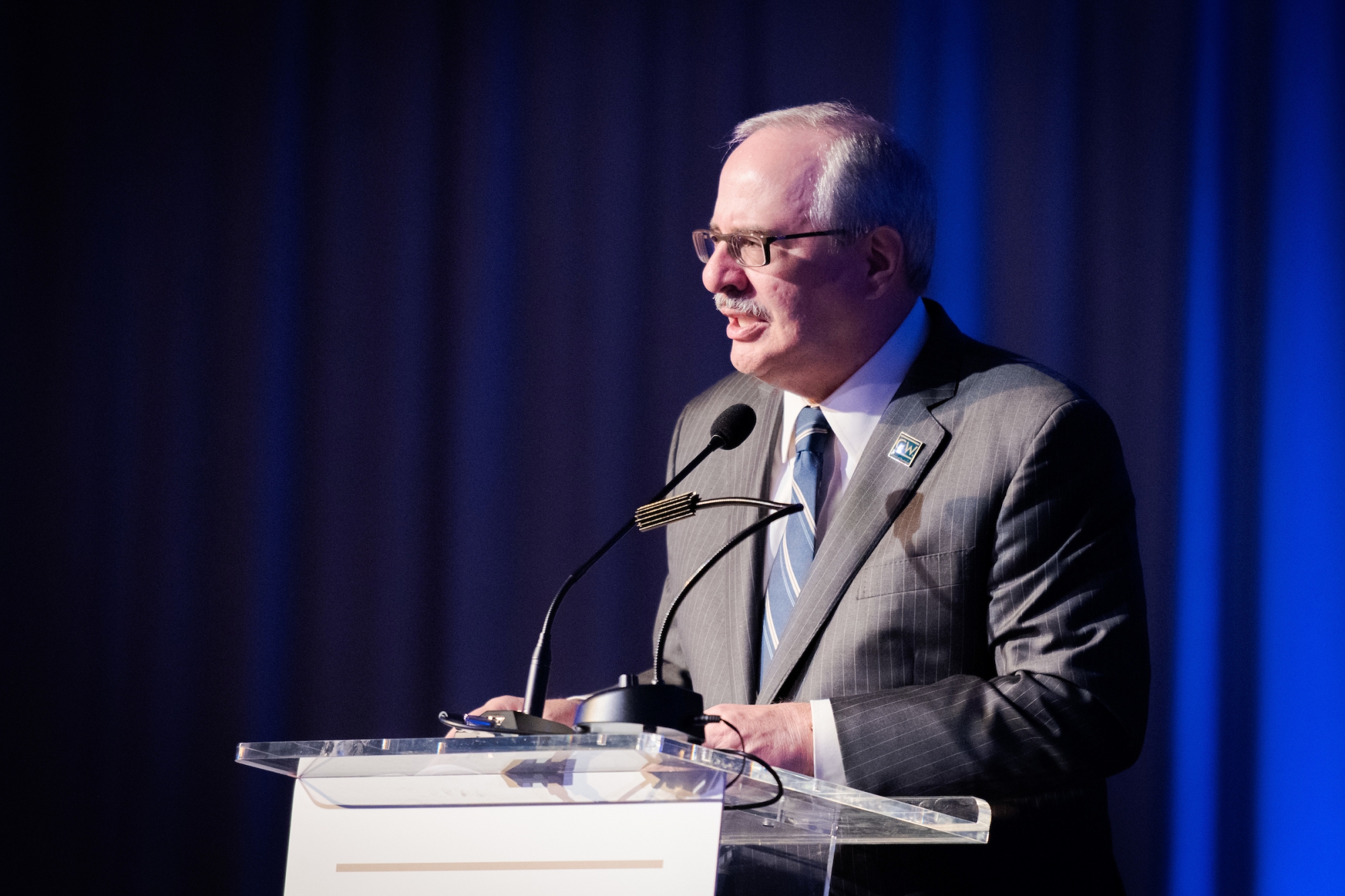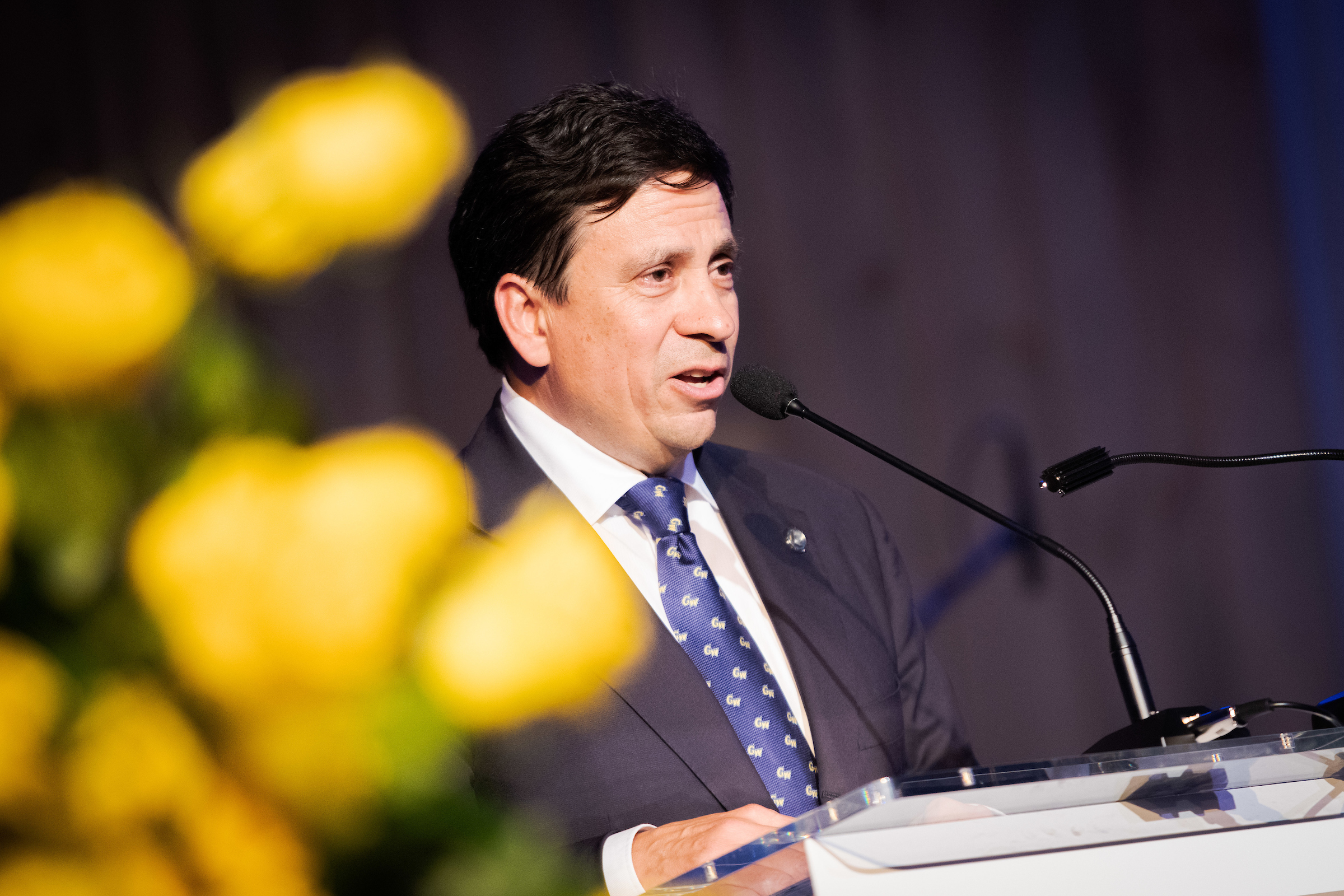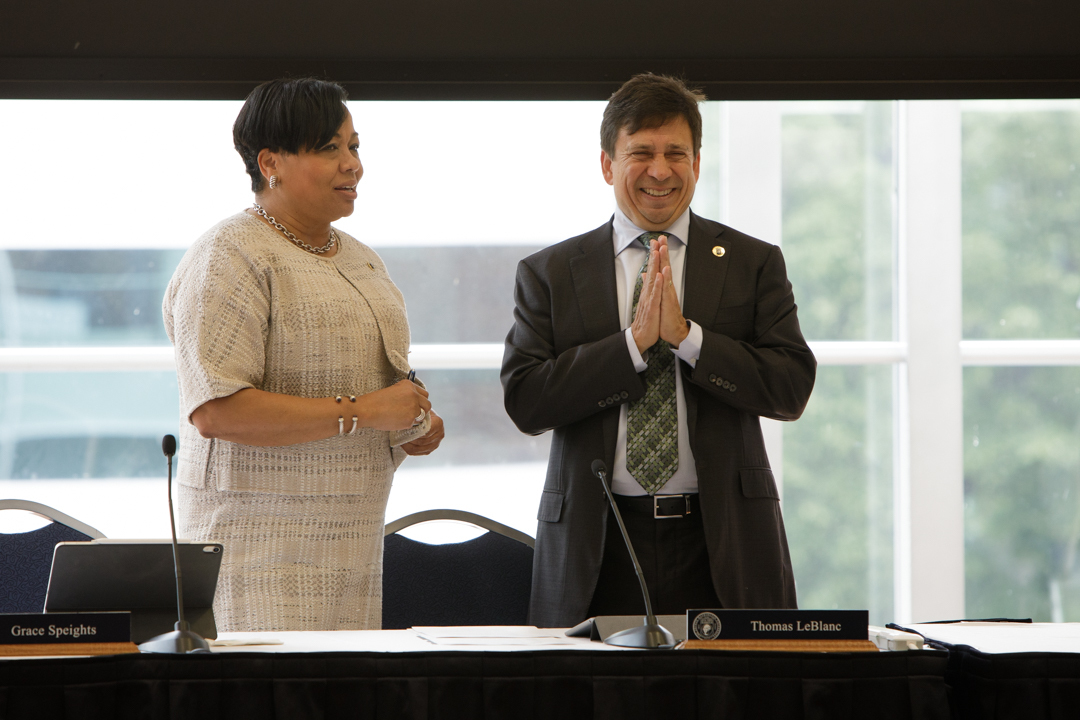By B.L. Wilson
The top echelon of George Washington University leadership was on hand Thursday evening to celebrate Nelson Carbonell Jr.’s 17 years of service on the GW Board Trustees, the past six years as a chair whom many described as transformative.
Present were current and former GW Presidents Thomas LeBlanc, Steven Knapp and Stephen Joel Trachtenberg, current and former trustees, Chair Emeritus Russ Ramsey, B.B.A. ‘81, current and former faculty and student leaders, as well as the deans and faculty of GW schools and colleges.
The dinner in a chandeliered, bedecked tent that covered the full length of University Yard got off to a rousing start with music provided by singer Nicole Henry backed by a live jazz band.
Aristide Collins, GW vice president, chief of staff to Dr. LeBlanc and university secretary, presided over the ceremonial honors, welcoming the family and friends of Mr. Carbonell, B.S. ’85, including his parents, Nelson Carbonell Sr. and his wife, Maria, two of his children Dylan and Roxy, and his wife, Michele.
Vice President Collins said the evening was “an opportunity for GW to thank Nelson for his commitment, his leadership and for his philanthropy to GW.” He introduced Ellen Zane, B.A. ’73, the board’s vice chair and also chair of the board of the GW Medical Faculty Associates.

Outgoing Board of Trustees Chair Nelson Carbonell Jr. (l) shares the podium with Aristide Collins, GW vice president, chief of staff to Dr. LeBlanc and university secretary.
Ms. Zane struck a theme that was repeated throughout the evening, remarking on Mr. Carbonell’s “fearlessness.”
“Nelson, as many of you know, is not afraid to take risks,” she said. “Nelson’s view is that good enough is not good enough.”
She noted his many accomplishments, spearheading the building of Science and Engineering Hall, working on searches for two GW presidents and reshaping the Board of Trustees, reducing its size and changing its composition.
In recognizing Mr. Carbonell’s generosity that she said was far greater than anyone in the room knew, she announced that the trustees had agreed unanimously to contribute $250,000 toward the Nelson and Michele Carbonell Engineering Endowed Scholarship.
A short film was shown featuring the plaudits of former GW classmates, professors, presidents and students whom Mr. Carbonell has mentored:
[video:https://vimeo.com/334734744 width:560 height:315 align:center lightbox_title:Nelson Carbonell Jr. Dinner]
Dr. LeBlanc followed, recalling one of his early conversations with Mr. Carbonell a couple of days before Christmas 2016. The board chair wanted to inform Dr. LeBlanc that he had been chosen as the 17th president of GW and wanted to finalize the contract so that they could announce the decision Jan. 6. Dr. LeBlanc said he suggested that gave them just two weeks to get everything done.
Mr. Carbonell offered what Dr. LeBlanc called a Nelsonism: “’I’m an entrepreneur. I set deadlines, and people hit them.’”
“Nelson moves fast, yet deliberatively, smartly,” Dr. LeBlanc said. “This is one of his hallmarks and why he has gotten so much done in the last 17 years,” he said.
He said that he doubted that GW would have a school of engineering or Science and Engineering Hall “were it not for his advocacy and the opportunities he saw in an increasingly technological world and for the vision he had for GW.”
“That building and the teaching and research in it is now positioning us for the growth we very much need in all of our disciplines to prepare our students for an increasingly technological society,” Dr. LeBlanc said of SEH. “This is largely thanks to Nelson.”
He enumerated the many “contributions of time, treasure and talent” made to GW by Mr. Carbonell and his wife, Michele, including the Carbonell Family Professorship in Autism and Neurodevelopmental Disorders, donations to athletics that led to the creation of the Nelson and Michele Carbonell Academic Center at the Charles E. Smith Center and scholarships such as the Nelson and Michele Carbonell Engineering Endowed Scholarship.
The president mentioned that Mr. Carbonell was heavily involved in updating the Faculty Code and helped to jumpstart the Making History campaign, which ended ahead of schedule and exceeded its $1 billion goal.
On Friday, the board named Mr. Carbonell chair emeritus of the board of trustees, effective June 1. In passing its own resolution on Mr. Carbonell’s service, the Faculty Senate earlier noted other significant contributions to GW by Mr. Carbonell, including:
- Reorganizing GW’s medical center, which resulted in the creation of three distinct schools: GW Nursing, the School of Medicine and Health Sciences and the Milken Institute School of Public Health
- Enhancing the arts at GW by acquiring the Corcoran School of Design and the Flagg Building
“In my nearly 40 years in higher education, I have never seen a trustee have the kind of impact on an institution that Nelson has had on this great institution,” said Dr. LeBlanc.

President LeBlanc said Mr. Carbonell's advocacy played a key role in GW having Science and Engineering Hall.
It was then Mr. Carbonell’s turn to say goodbye. He recalled when it all began, in 1981 as a first-year GW student on scholarship.
For many years after he graduated, he said, he did not think of the debt he owed the university. He married. Started a family and a company. Then, the man he succeeded as board chair, Russ Ramsey, asked him to speak at a leadership retreat.
Mr. Carbonell recalled saying that universities should be comprehensive, give students the opportunity to study broadly and interact with others outside their interests, with engineers studying poetry and poets studying math.
A few years after his speech, he was elected to the board of trustees. In 2013, he was asked to chair the board.
“It was an honor and opportunity beyond any that anyone could deserve. I have to say these last six years as chair have been a challenge and a joy. It is the most meaningful experience of my professional life, and as GW always demanded of me, I gave it my best,” he said.
Opening the Science and Engineering Hall, he said, had been his proudest achievement and thanked the audience for helping him make that happen. He also highlighted the $1 billion Making History campaign as a success that the trustees and the university leadership could share.
He said that he hoped that the past 17 years were a new beginning for GW. “That would be the best ending I could hope for,” he said, stepping down to a standing ovation.



